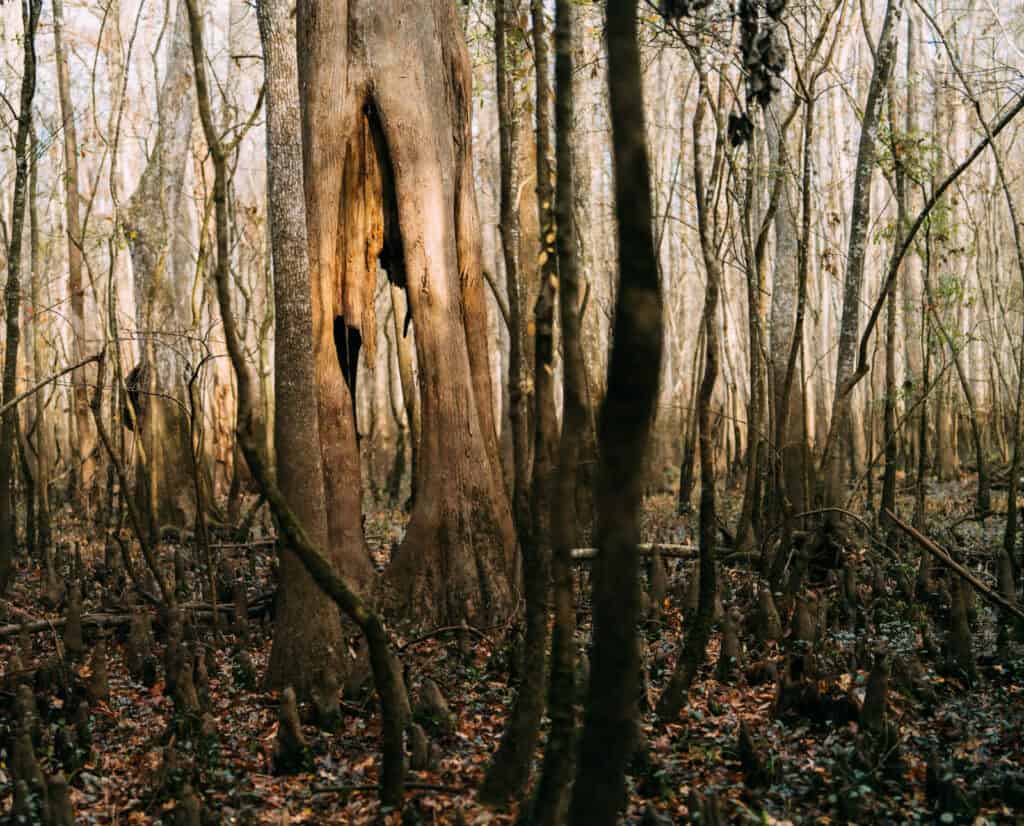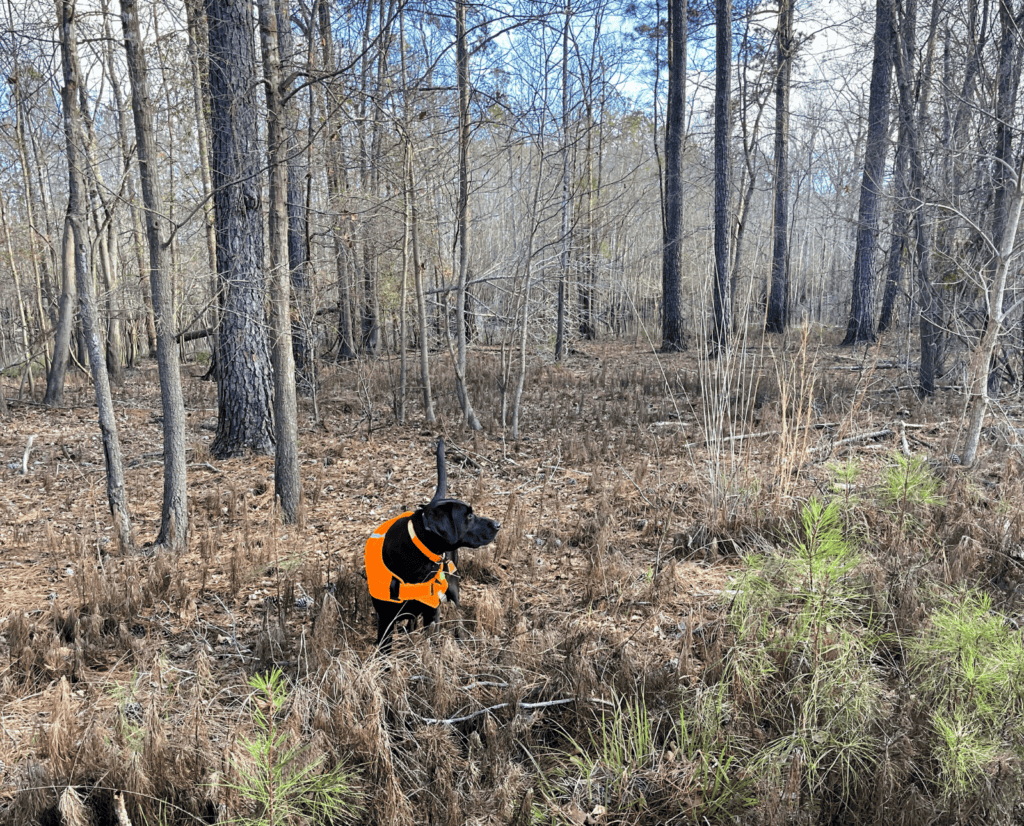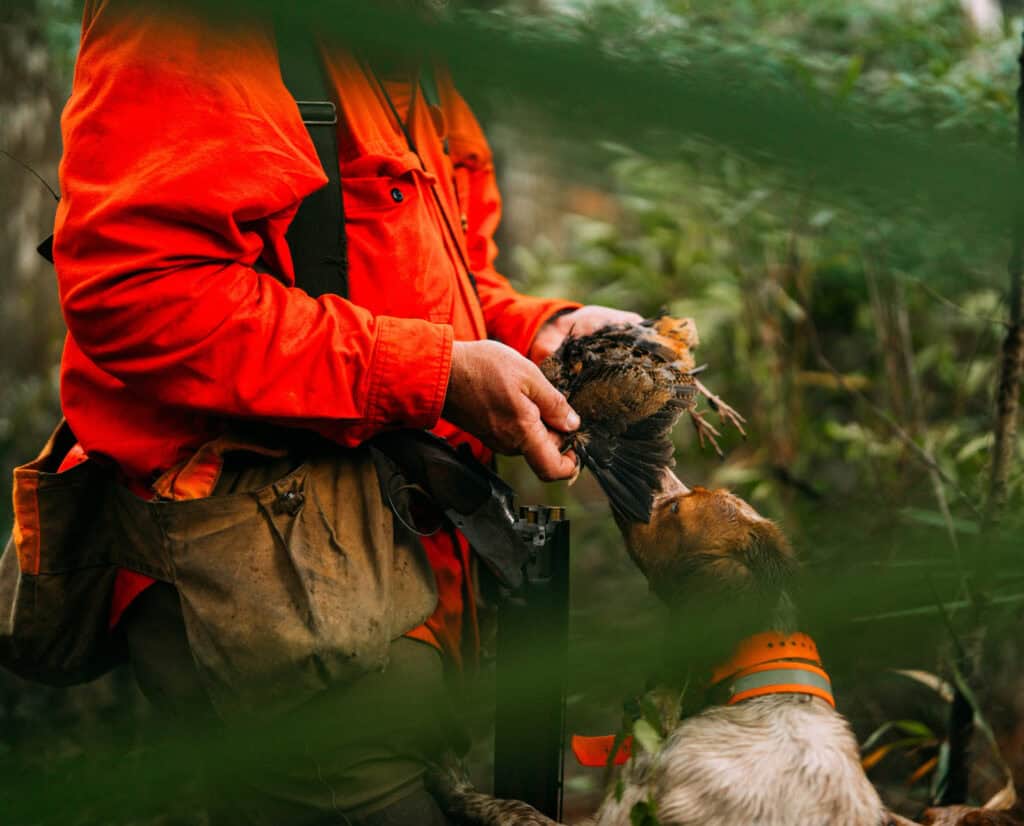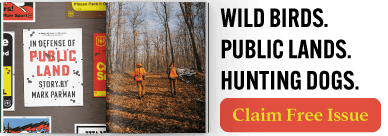Home » Woodcock Hunting » Hunting American Woodcock in the Southeast
Hunting American Woodcock in the Southeast

Patrick Hunter was born and raised in the Carolinas. He…
Prepare to hunt American woodcock down south with these hunting, habitat identification, and gear tips
In the southeast, by mid-December, most hunters turn their attention away from whitetail deer and solely focus on waterfowl hunting. Wood ducks and Canadian geese can be found anywhere there’s water. Many folks decoy puddle ducks and divers on the coastal plains, and lakes offer great opportunities for mallards and teal. But there is one migratory bird that most waterfowlers rarely glimpse: the American woodcock.
Woodcock arrive in the South each fall under the cover of darkness. By sunrise, they are tucked away in dense cover. However, if you don’t mind putting a few miles on your boots beside a good bird dog, hunting American woodcock in the southeast is a great way to get out of the blind and into the woods.

Southeastern Woodcock Habitat and Cover
A third of American woodcock’s eastern population stops in the Piedmont or coastal regions of North Carolina and South Carolina. If they do not winter here, they continue to Florida and Louisiana.
Southeastern woodcock love natural areas Southerners usually avoid. Briars, cane, thistles, thickets, and blowdowns are the comfortable homes of these vagabonds from the Northwoods.
Coastal Regions
In the coastal regions of the southeast, a mosaic of pine plantations covers the landscape. When hunting woodcock here, seek out clearcuts less than five years of age. The young pines and native grasses provide plenty of cover for woodcock to loaf around in during the day, and the understory habitat is a good landing area for birds coming in at night.
Forests
In areas managed for both timber production and wildlife, stands on a two- or three-year prescribed fire rotation foster stopover habitat and feeding grounds. Fresh burns are great places to search for chalk. Locations with a lot of chalk are where most migrating woodcock are landing. Once they arrive, the birds move into areas with a year or two of growth and more established cover.
By the time a stand of pine trees begins to approach its first thinning, the trees have acidified the soil. In these areas, the soil’s pH level has typically been lowered so much, it’s no longer suitable for worms. In mature pine stands, woodcock prefer a habitat of 50 to 75 yards in width with plenty of cover adjacent to a swamp, wetland, river, or creek.
Agricultural Lands
In the Piedmont regions and some coastal areas where there is an agricultural influence or dense stands of hardwoods, look for areas of thick cover along a floodplain. The key is to find soil that contains moisture. If you find the soil, you’ll find the worms, and woodcock won’t be far behind. Cane breaks, hedgerows, and briar thickets that partition agricultural fields from wetlands or creek bottoms are excellent places to seek woodcock.
An entry into these wild and hostile places is not for the faint of heart. Without a good pointing or flushing dog, woodcock hunts often yield unsuccessful results.

Hunting Southeastern Woodcock With A Dog
My favorite thing about American woodcock is how well they hold in cover. When I first started taking my Labrador Retriever into the field with me, we marched through cover littered with sign, only to have birds flush behind us. They seemingly mocked us as they took to the sky. I quickly learned that woodcock hunting is one of the greatest upland games of hide-and-seek.
Woodcock are excellent concealers. Their mottled brown and tan feathers make them invisible on the forest floor. Hunting without a dog can yield success when woodcock numbers are very strong, but bird dogs weren’t meant to be couch potatoes. Woodcock are a gun dog’s best friend thanks to their persistence to not flush. If you desire to add a dog to your family and aid in your pursuit of woodcock, pointing breeds are very useful in the Southeast. If your pup can find and point a covey of quail, they will do just fine in the woodcock woods.
Retrieving and flushing breeds also perform well while in search of a hunkered-down timberdoodle. For retrievers and flushers, be diligent when working through thick cover. Make several passes and circle back through areas where sign is abundant or where you’ve flushed birds in the past. Most dogs seem to get the hang of it after they bump a bird or two.

Shooting Southeastern Woodcock
You might have the best upland dog in the world, but you won’t find success unless you can hit your target. Woodcock are not like quail, chukar, or pheasant that flush out in front, veering to the left or right before fluttering back down. A woodcock flies like a harrier jet being operated by a toddler. As a result, mastering woodcock shooting doesn’t come without practice.
Woodcock will soar vertically, roll upside down, and corkscrew mid-air through thick timber and brush. When shooting woodcock, always allow time for the bird to get out in front of you. Remember, hip shots are incredibly inaccurate, not to mention dangerous. Additionally, the objective is to leave the woods with some table fare. A close shot might help shoot a limit, but it certainly won’t fill a stomach.
Gear for Hunting Woodcock in the Southeast
Southeastern winters are as erratic as a woodcock flush. It is no surprise to have weather in the 20s at the beginning of the week, and by the weekend, it’s sunny and 75. A hunt might start with a jacket, blue jeans, and a long-sleeved shirt, but you might cut the sleeves off after lunch.
Invest in a good pair of boots and a pair of briar chaps. If the terrain is wet, pack rubber boots. If you plan to hunt more upland-like areas, leather hiking boots are excellent, especially if you’re covering a lot of ground. A solid compromise is a pair of L.L. Bean duck boots.
Similarly, wool socks dry faster, are more insulated, and breathe better than cotton socks. I know this sounds strange, but if your feet could get wet, wear a pair of Neoprene wading socks, like those used when fly fishing. If you wear Neoprene socks, you can hunt all day long in a pair of waterlogged boots.
Lastly, bring more water than expected, as woodcock hunting is a lot like a day hike with a gun. If your four-legged friend is accompanying you, bring water for them, too, unless you don’t mind the taste of slobber.
Safety and Firearms
Blaze orange is a requirement when hunting on public land. However, for safety reasons, it should be worn regardless of where you’re hunting. A blaze-colored hat and vest will suffice. The limit on woodcock is three, so the vest is not totally necessary, but it can certainly help when toting gear for a hunter and a dog.
When selecting a gun for woodcock hunting, a lightweight shotgun is preferred. For example, I hunt southeastern woodcock with a 20 gauge over/under. If you only have a 12 gauge pump in the gun safe, it may be a little heavy, but it will work just fine. Regarding shot size, #8 or #9 shot ensures the most pellets down range. When it comes to choke tubes, shoot through an improved cylinder or modified.
I heard it once said when God created the woodcock, He just used a bunch of leftover parts of other birds. As a Southerner, I have a deep affection and tenderness for leftovers, most times the result of a large family gathering or church potluck. I share this sentiment with this little bird; leftovers don’t mean left out, but rather, a carry over to be enjoyed even more the next day.
Patrick Hunter was born and raised in the Carolinas. He grew up in the foothills of the Appalachian Mountains where he fell in love with hunting, fishing and the outdoors. As a third generation hunter, Patrick has a deep rooted legacy in hunting, especially for quail and ducks. Patrick's hunting companion is Huck Finn, 5-year-old black Labrador Retriever. Outside of hunting, Patrick is an avid fly fisherman, fly tyer, freelance writer, and photographer. Patrick is an environmental engineer by trade, and works to conserve the water resources, wildlife, and the wild places of the Carolinas. Today, Patrick lives in South Carolina with his wife, Katie, and daughter, Jane.




In SE Texas doodles generally prefer thick, tributary creek bottoms, however, the area I hunt also has mixed forest uplands that often hold woodcock during the first part of the migration. I hunt on private property and have flushed as many as 8 in my hour and a half hikes. They do seem to move around quite frequently during their southern sojourn. One day there will be 1 or 2 then 2 days later none then after several more days I’ll flush 4-5. My Pudelpointer would rather hunt them than ‘pen-raised’ quail because she gets to tree squirrels along with finding woodcock.